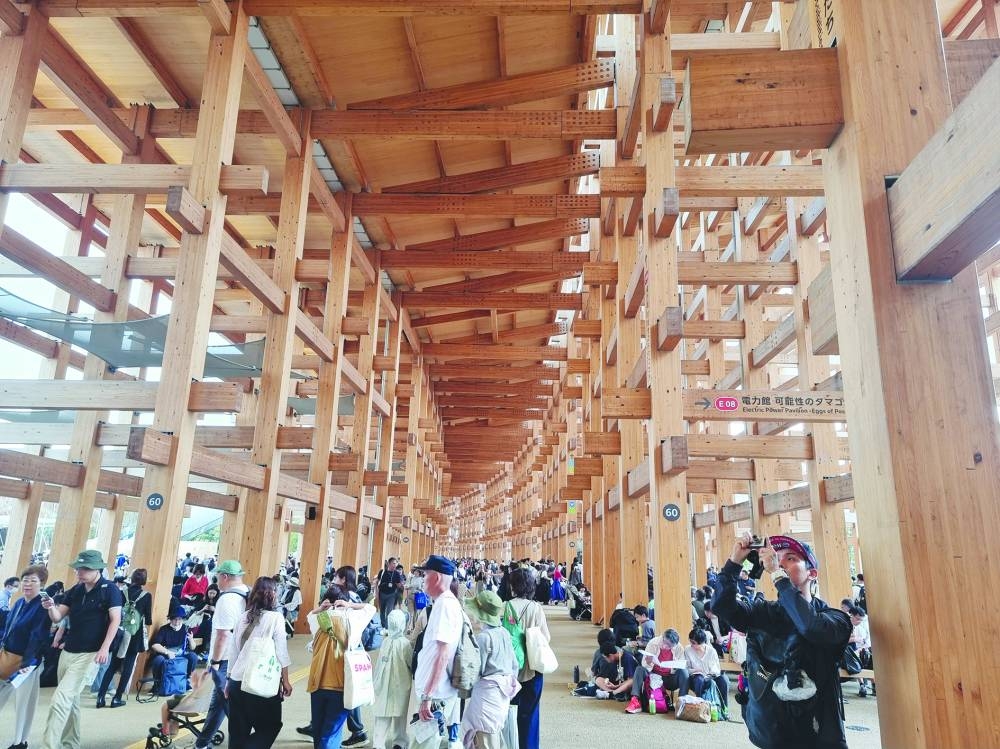Osaka, Japan: Expo 2025 Osaka continues to attract massive crowds, both domestic and international, eager to experience a tangible vision of a sustainable future before the gates close on October 13.
The six-month event, themed ‘Designing Future Society for Our Lives’, seeks to foster global collaboration in building a sustainable society where individuals can redefine happiness and realise their full potential.
Organisers expect total attendance to exceed 28mn, driven by the strong appeal of the participating pavilions, many of which still draw long queues across the exhibition grounds.
The diversity of visitors underscores broad interest not only in technological innovation but also in cultural exchange, as large numbers of foreign guests – including those from the Middle East – arrive to experience global traditions and perspectives.

The Pasona Natureverse pavilion presents a ‘flying operation unit’ and a ‘remote operation centre.’
A major highlight, the Future Society Showcase, demonstrates practical applications of tomorrow’s technologies across six key areas: Smart Mobility, Digital, Virtual, Art, Green, and Future Life.
The Advanced Air Mobility (AAM) enthralled audiences with displays of next-generation vehicles positioned as near-future solutions to urban congestion and remote access. This offers seamless transportation for city commuters as well as residents in remote areas.

The Future of Life pavilion at Expo 2025 showcases android robots
Robotics also takes centre stage at the Expo, presenting a glimpse of how androids could enhance everyday life. Visitors interact with a range of robotic platforms, from the Robot and Mobility Station to automated service units operating throughout the venue.
It is learnt that the Expo is widely regarded as a key platform for addressing pressing issues, particularly climate change and healthcare, through its emphasis on sustainability. Exhibits dedicated to achieving carbon neutrality by 2050 include a cutting-edge carbon recycling factory.
Medical innovation is another major draw. The Osaka Healthcare Pavilion features body-analysis pods that collect seven categories of health data, enabling visitors to meet digital avatars that project their health status 25 years into the future. Other attractions include advanced surgical technologies, such as a “flying operation unit” and a “remote operation centre,” along with research into the future of sleep showcased at the Pasona Natureverse.
Artificial intelligence and human connection are explored in the Future of Life Pavilion, curated by renowned roboticist Ishiguro Hiroshi. The pavilion features highly advanced androids, including Geminoid, a strikingly humanlike robot modelled after Ishiguro himself, engaging visitors in thought-provoking dialogue.
The Expo’s architectural centrepiece is the Grand Ring, designed by renowned architect Fujimoto Sou. This huge wooden structure, one of the largest of its kind in the world, covers a 2-km circumference, offering shaded viewing areas while seamlessly connecting the different exhibition zones.


AloJapan.com